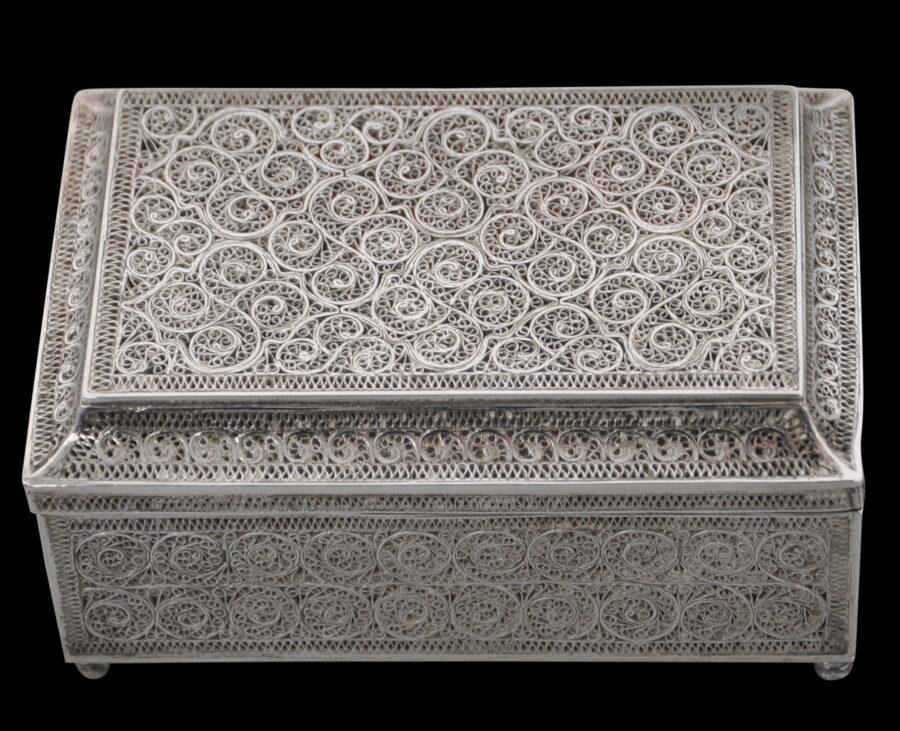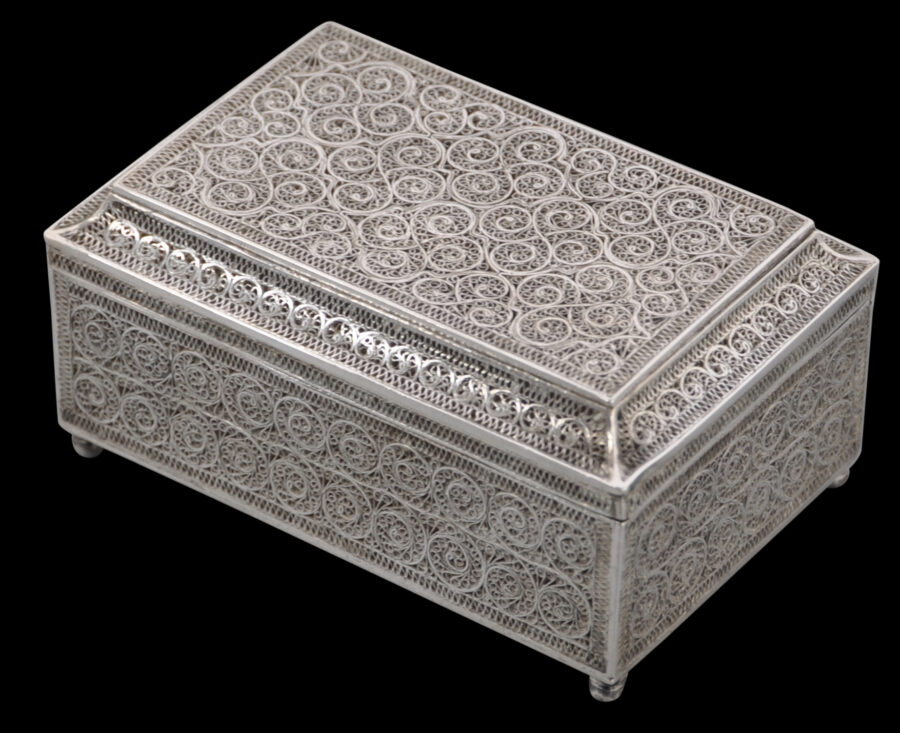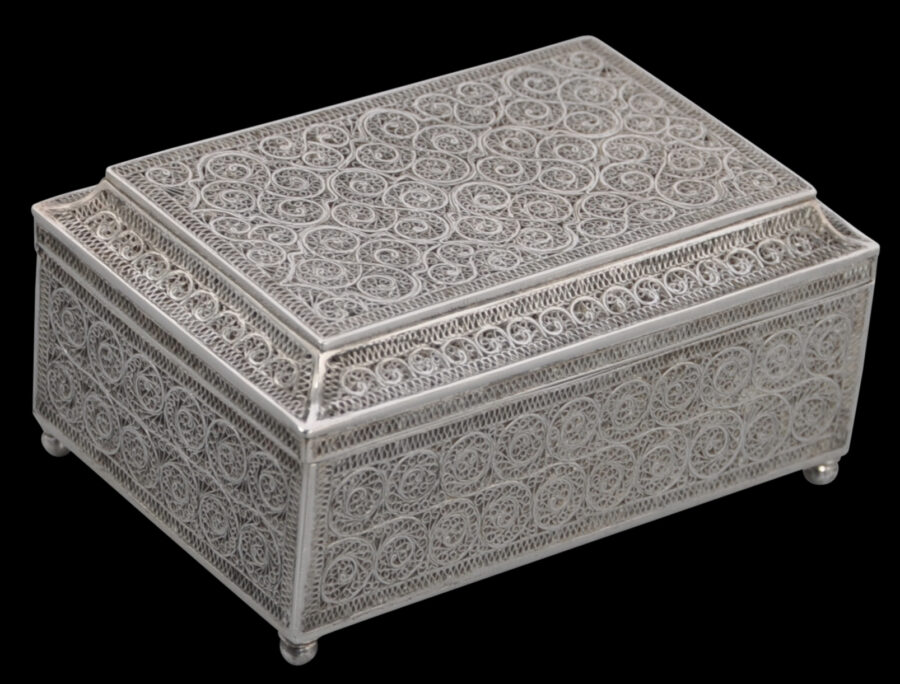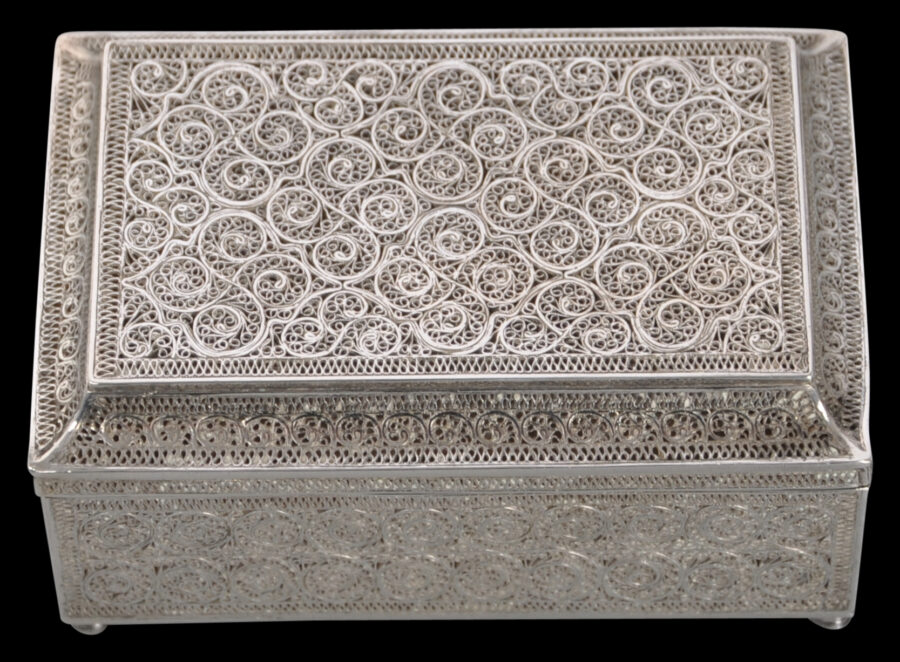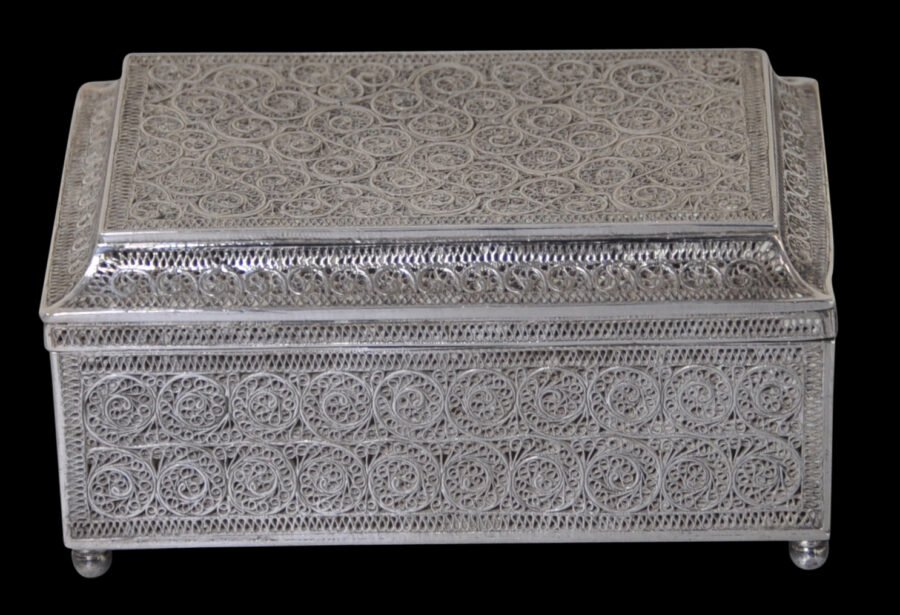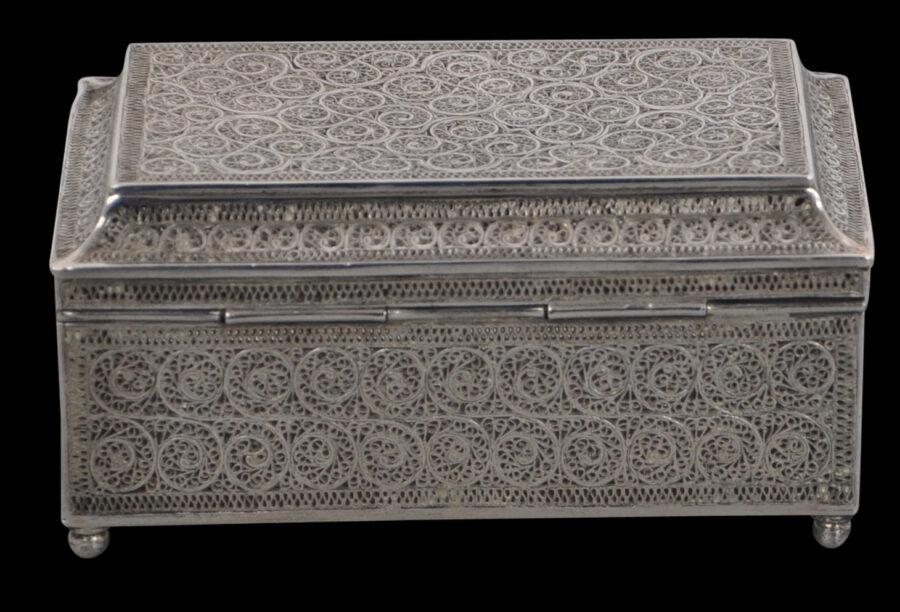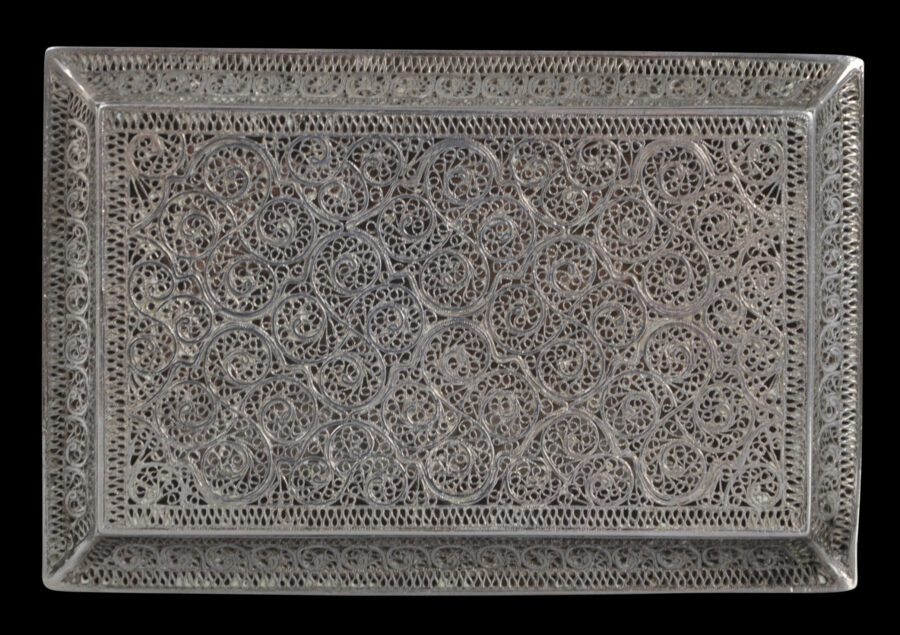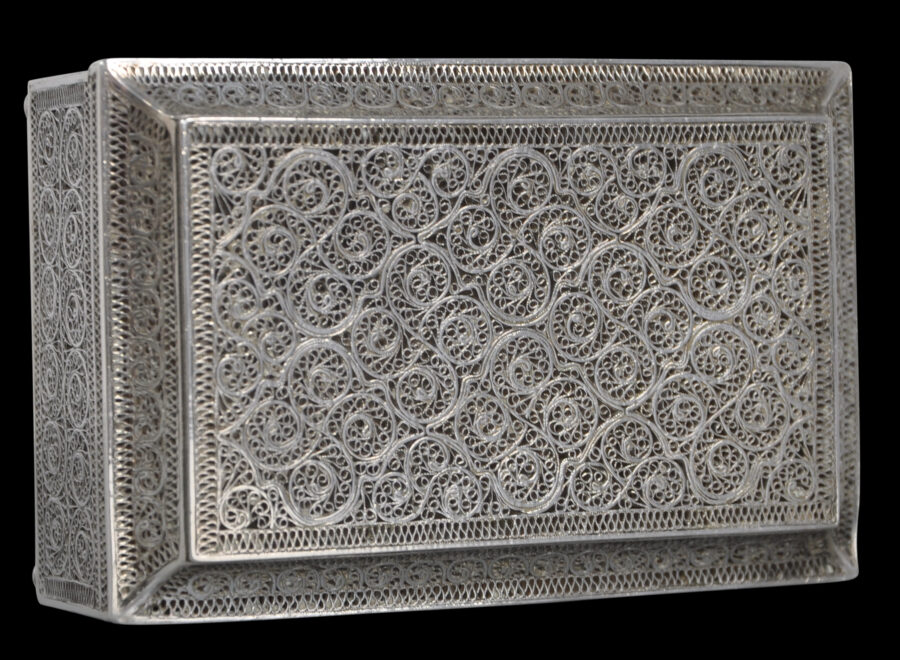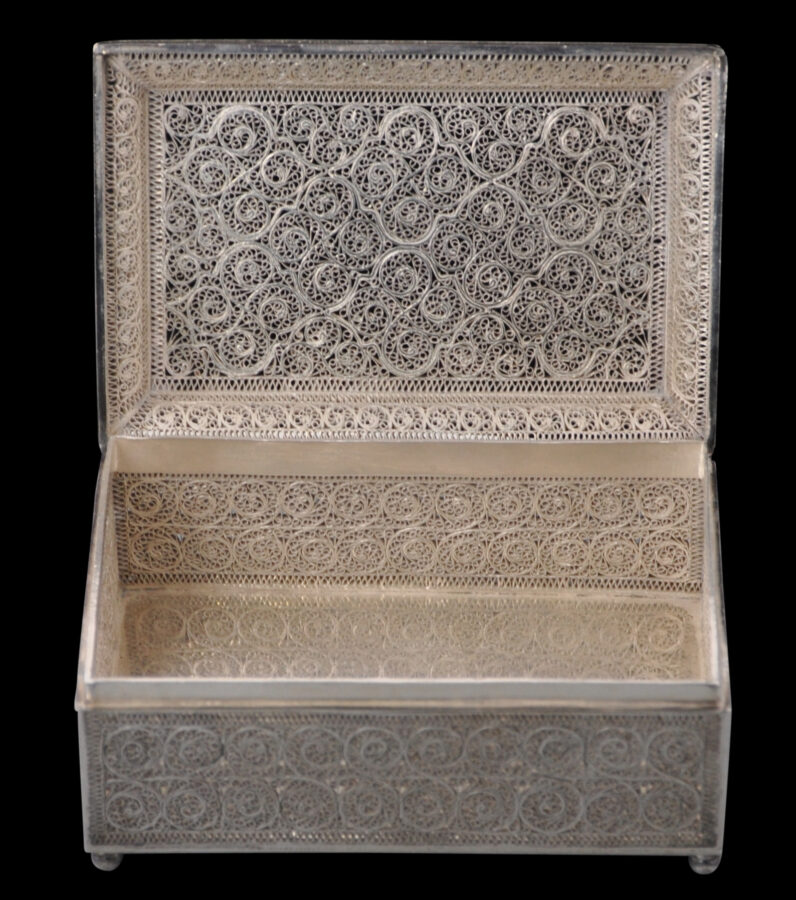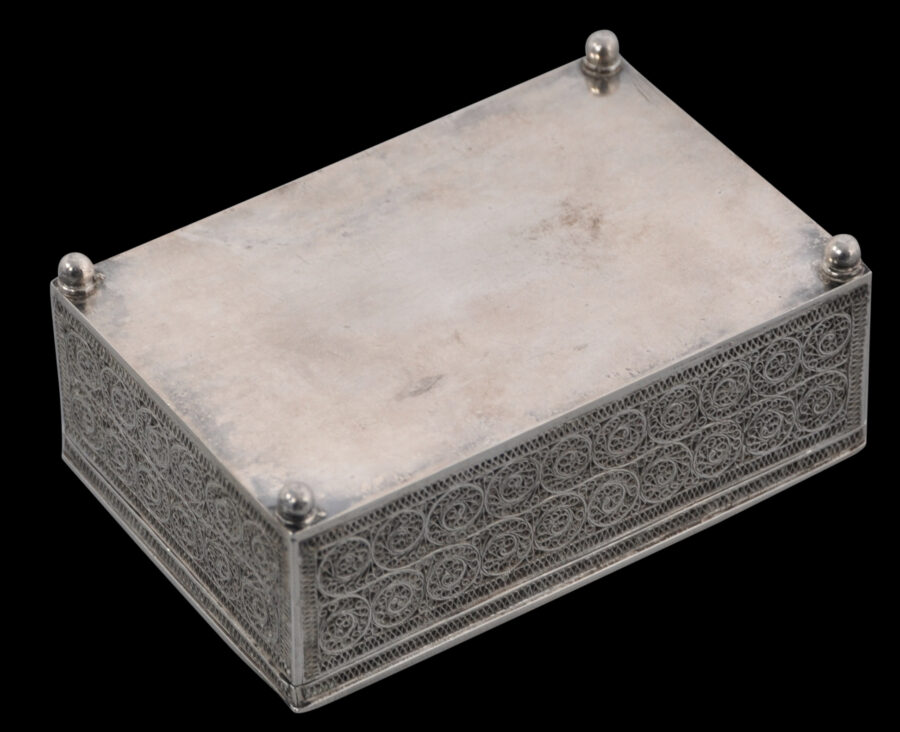This fine small, rectangular box has its sides and much of its cover composed of fine silver filigree spirals. The base is of plain sheet silver. Most probably it was made in the Dutch East Indies (present-day Indonesia) during the 18th century, or possibly in India. The borders that hem in the spiral motifs are in a zig-zag and this is more typically associated with Dutch colonial Batavian silver filigree than Indian silver filigree work.
The lid is hinged, fits tightly and has bevelled edges around the top.
The box sits on four, small, solid-cast, spherical silver feet.
The combination of wide, flattened wire components with fine twisted filigree work is found on articles that have been ascribed to Goa of the second half of the 17th century – see Menshikova (2006, p. 43) for two examples, and Levenson (2007, p. 263-4) for others. Menshikova refers to filigree items of this type as having been made by ‘Chinese masters in India or Southeast Asia’ in the 17th century, which leaves open the possibility that such items might have been made in Batavia or Sumatra perhaps, and most probably traded by the Dutch East India Company (VOC). China too is sometimes considered as a possible place of manufacture. But increasingly, a consensus of opinion is emerging that the type of silver filigree shown on the box here was produced in the Dutch East Indies, perhaps in Sumatra or Batavia, for export to the Indian market.
The box here is in fine condition. It is well made and attractive, most particularly because of the bevelled edge around the top.
References
Jordan, A. et al, The Heritage of Rauluchantim, Museu de Sao Roque, 1996.
Levenson. J. (ed), Encompassing the Globe: Portugal and the World in the 16th and 17th Centuries, Arthur M. Sackler Gallery, 2007.
Menshikova, M., Silver – Wonders from the East: Filigree of the Tsars, Hermitage Amsterdam, 2006.
Museo de Sao Roque, The Heritage of Rauluchantim, 2006.
Veenendaal, J., Asian Art and the Dutch Taste, Waanders Uitgevers Zwolle, 2014.


